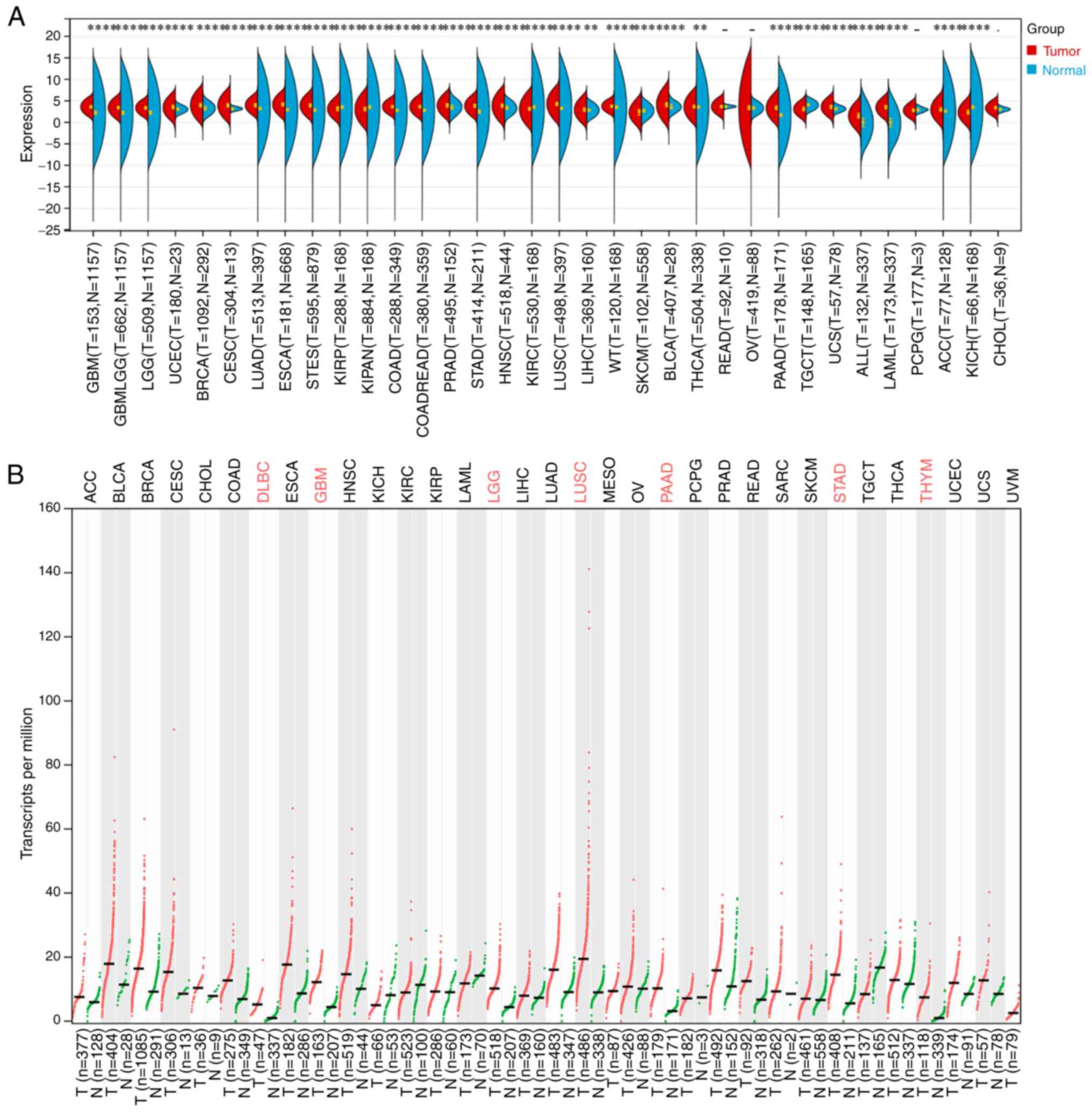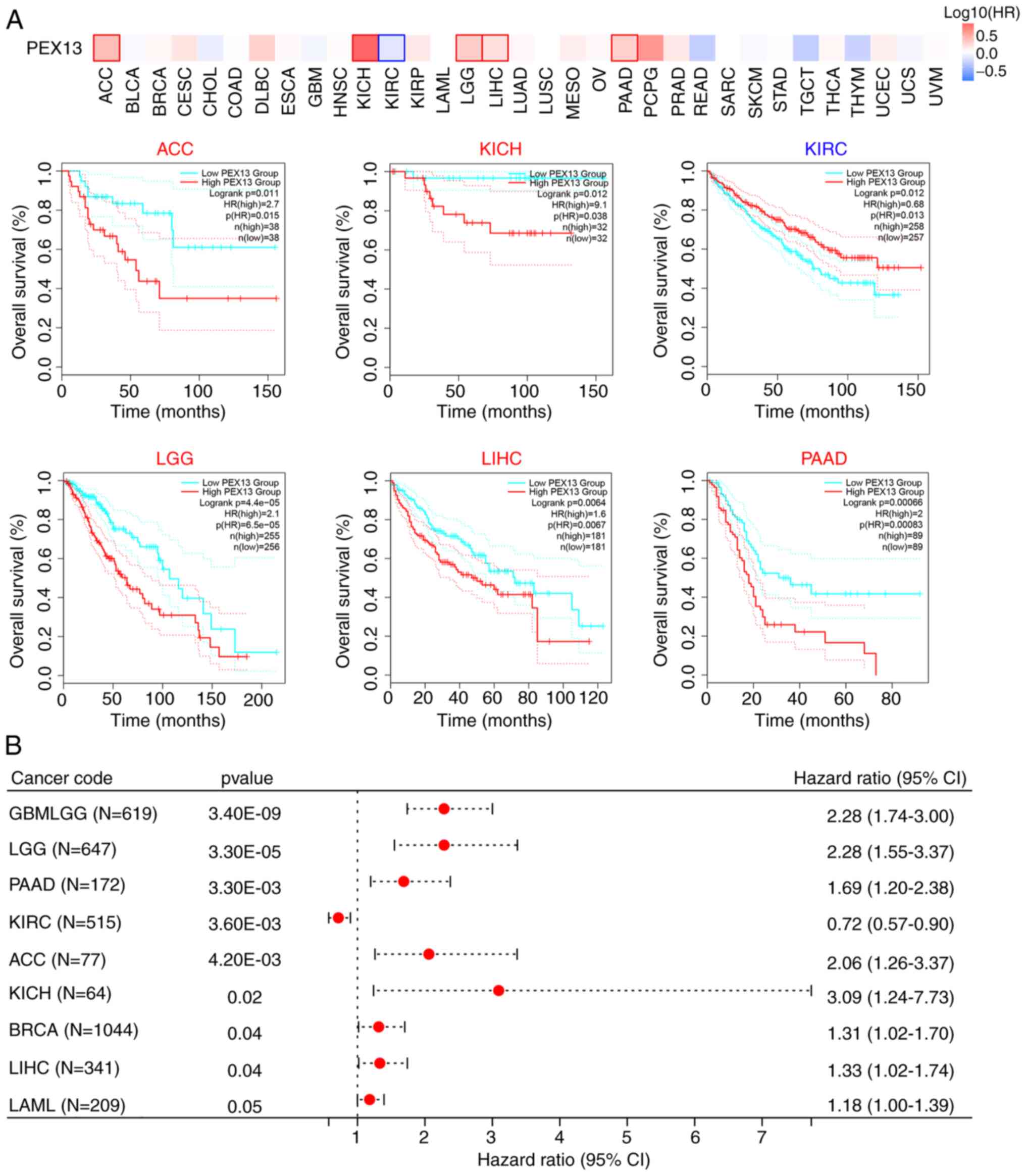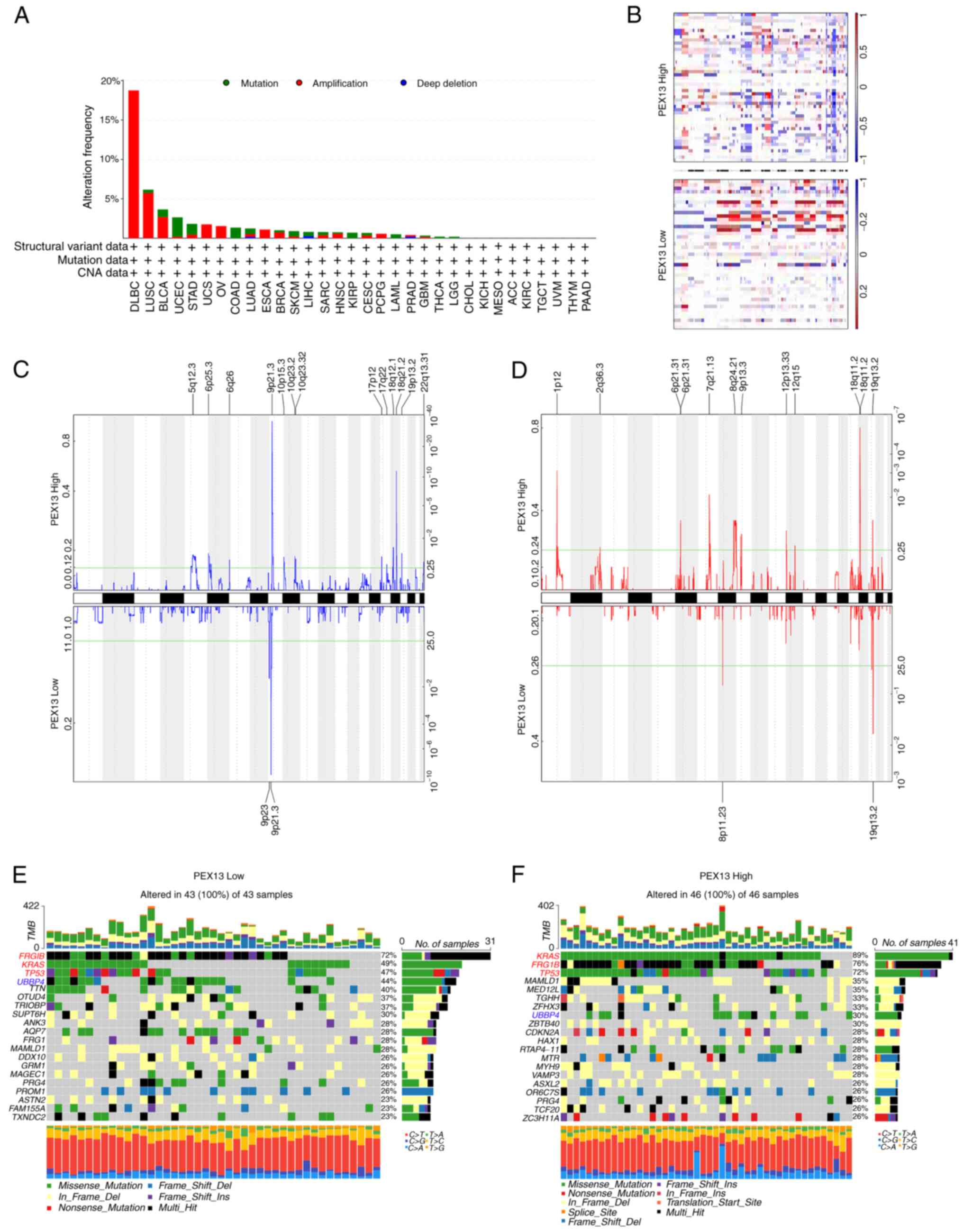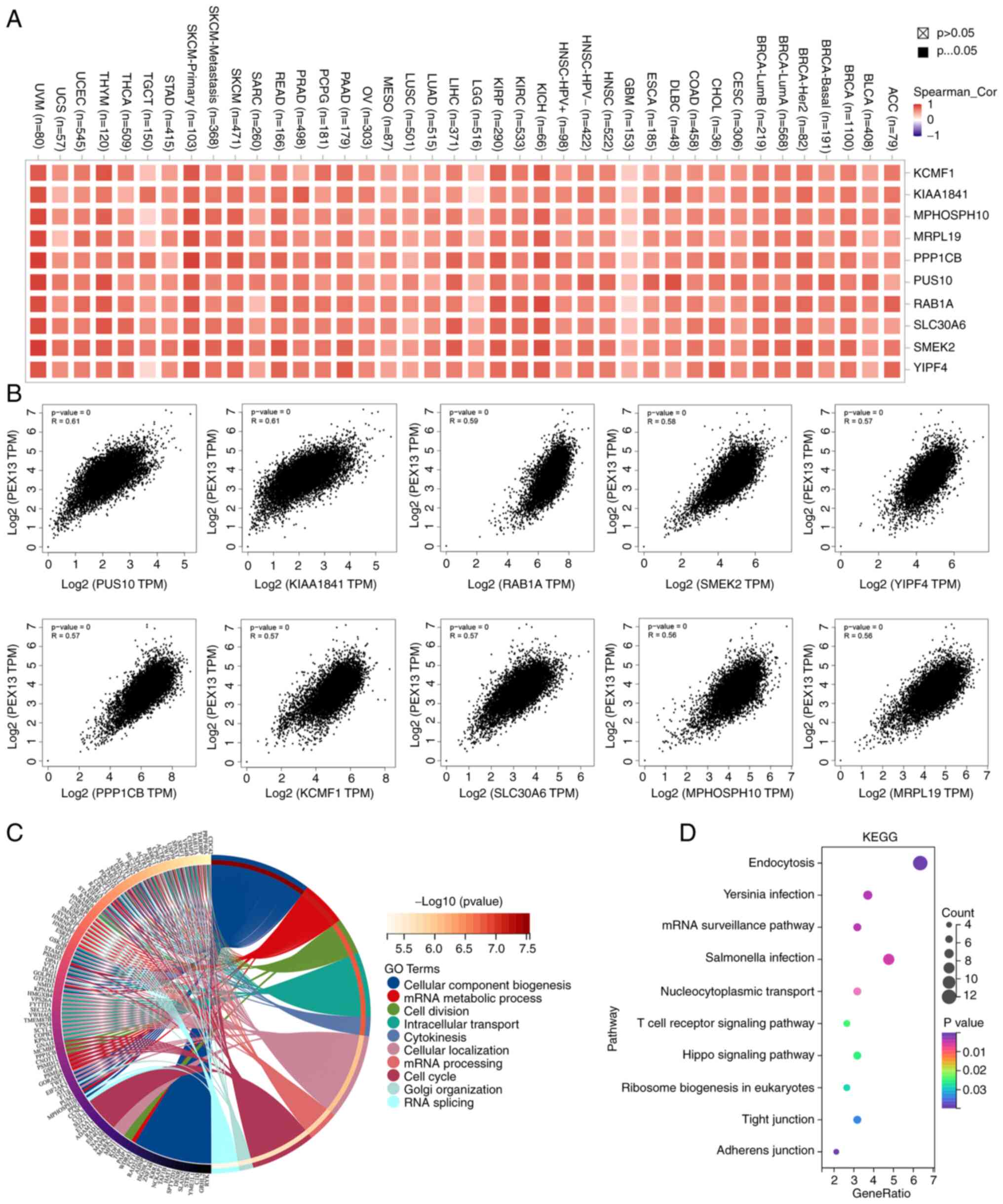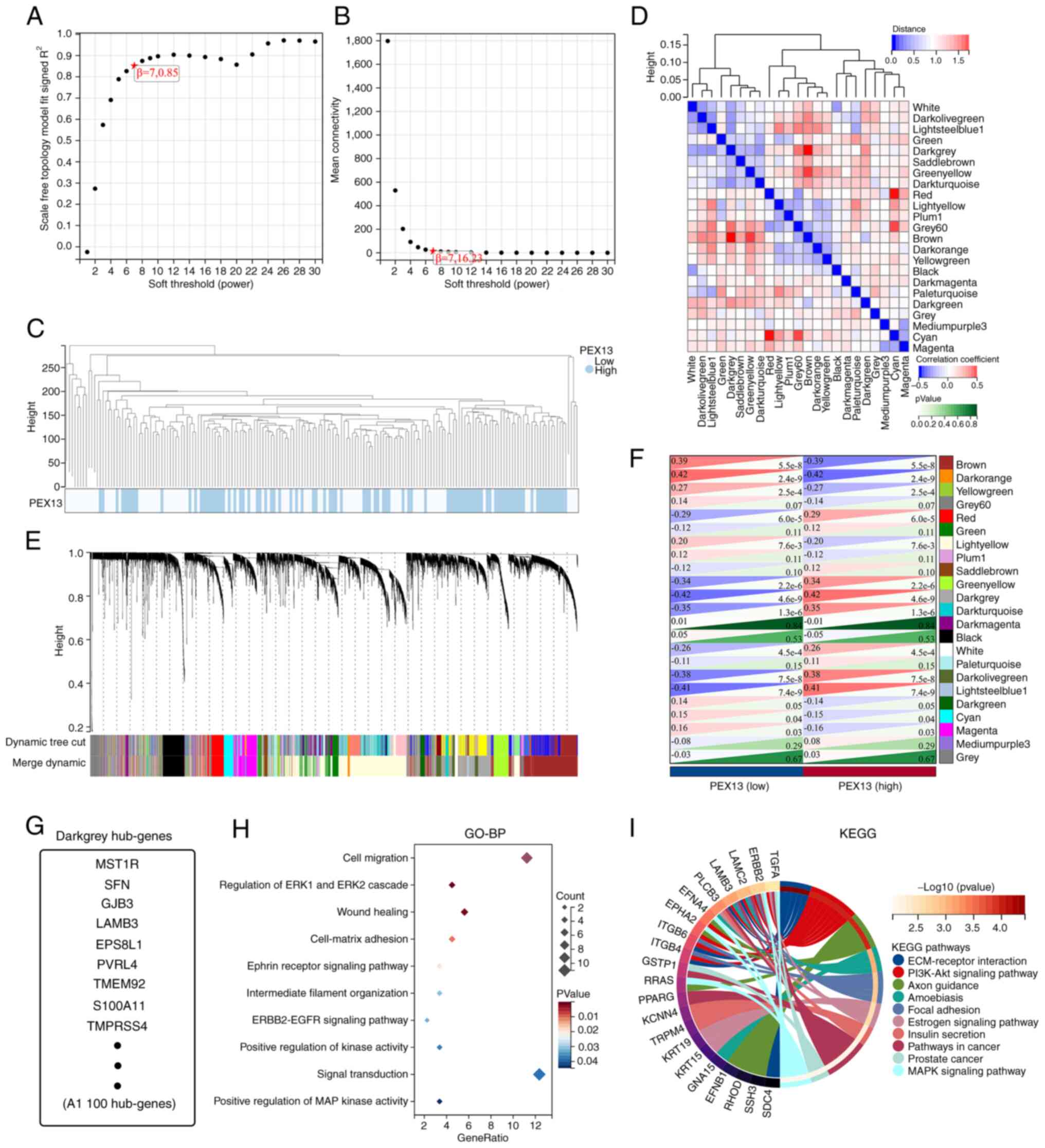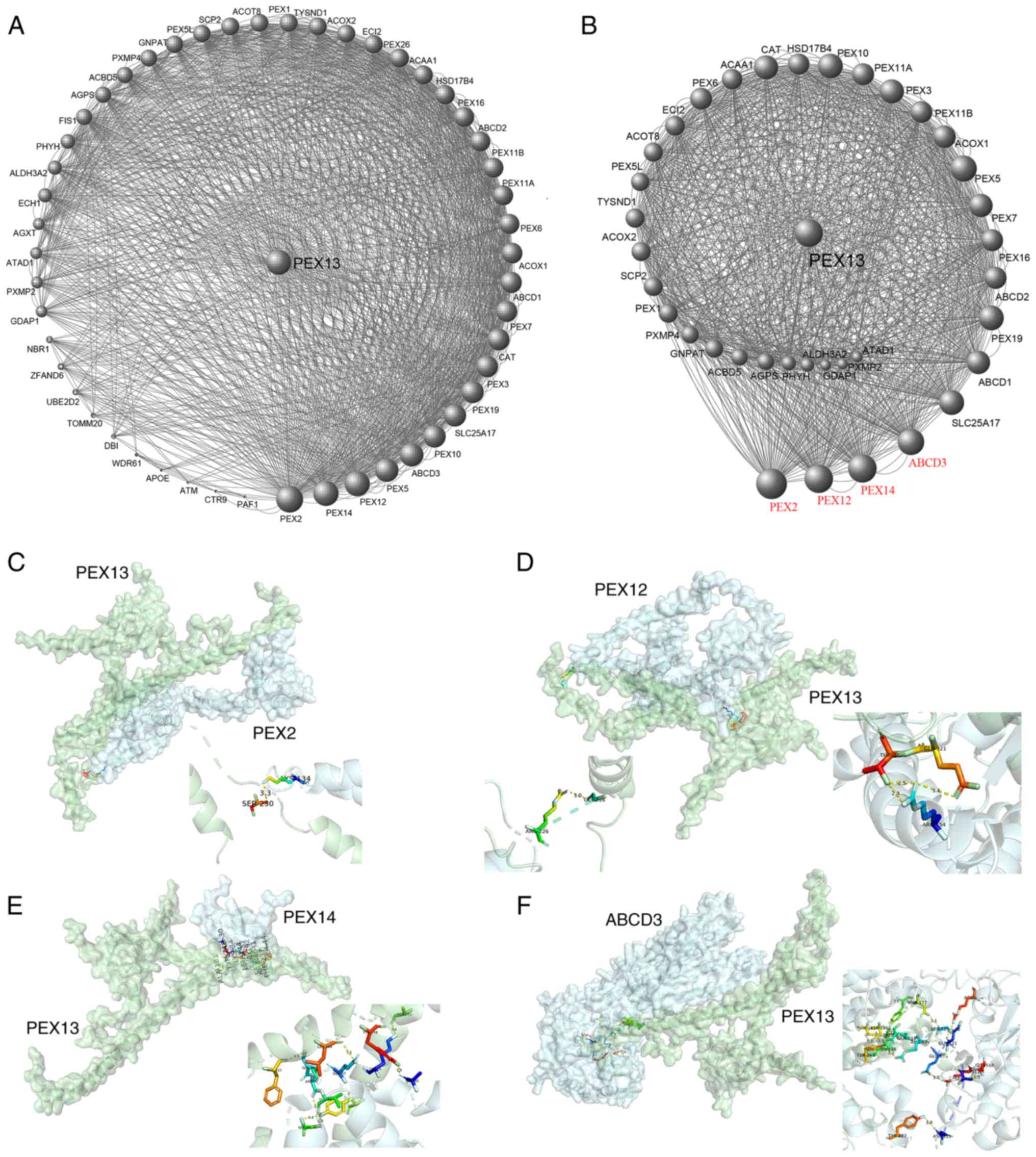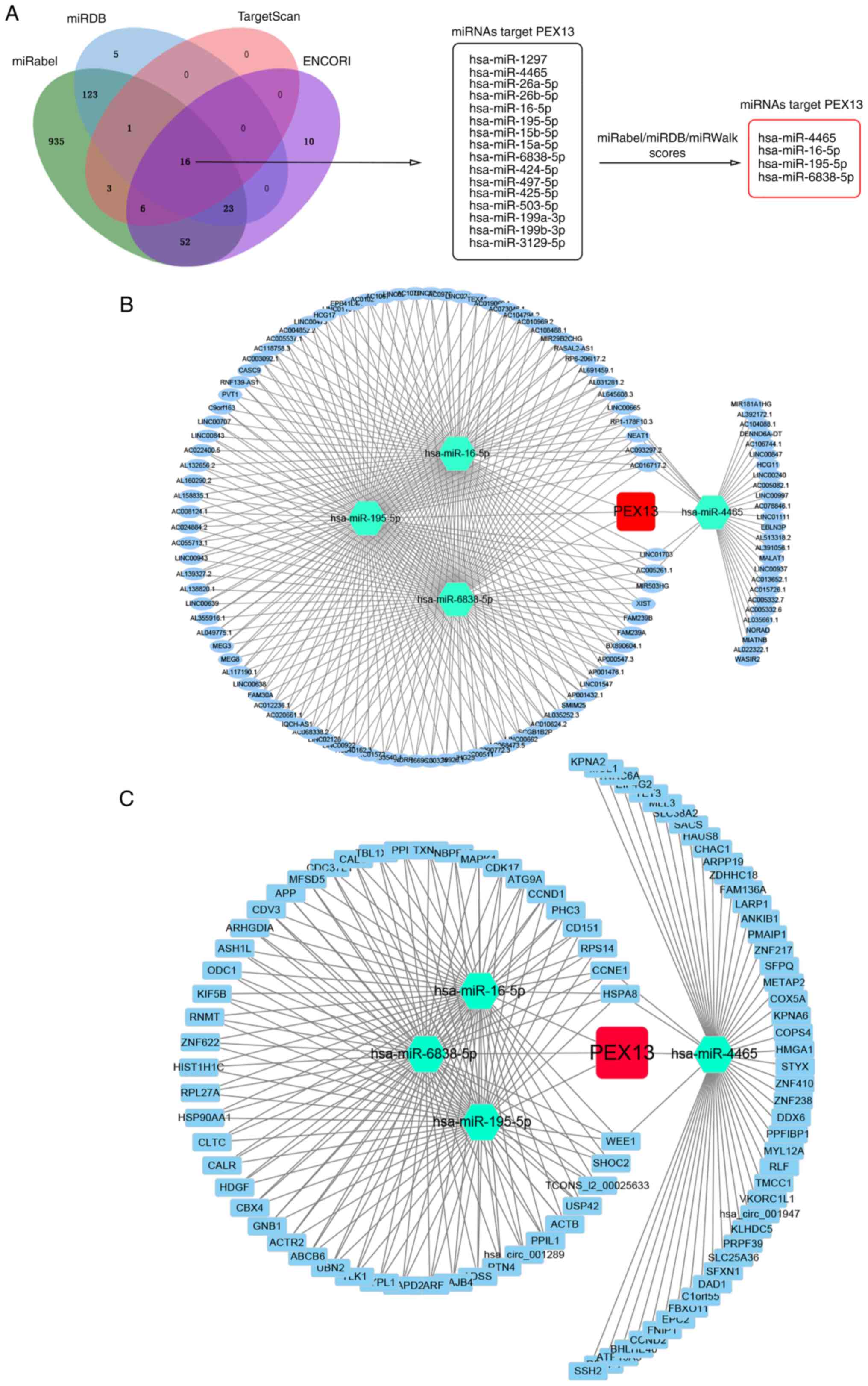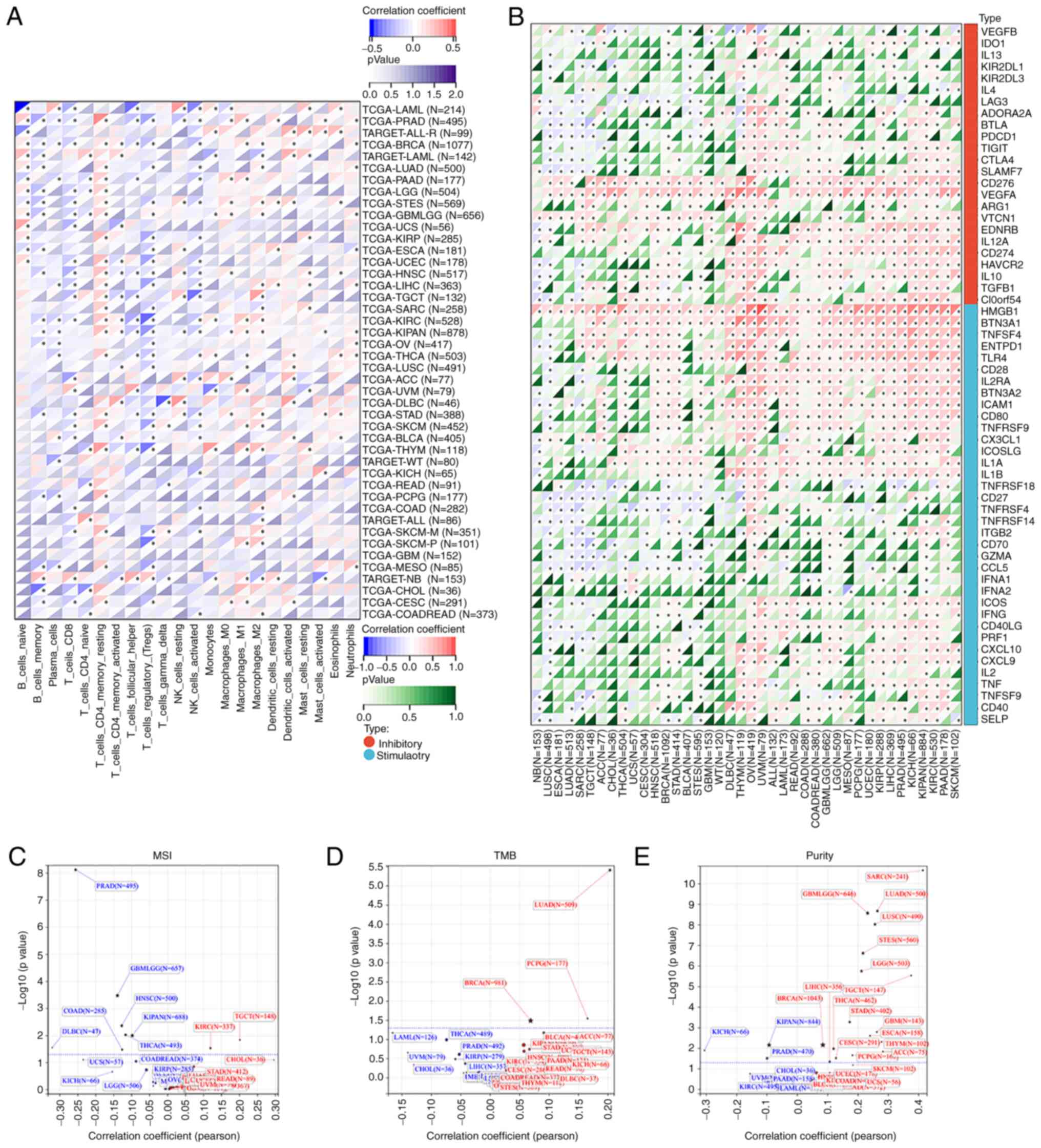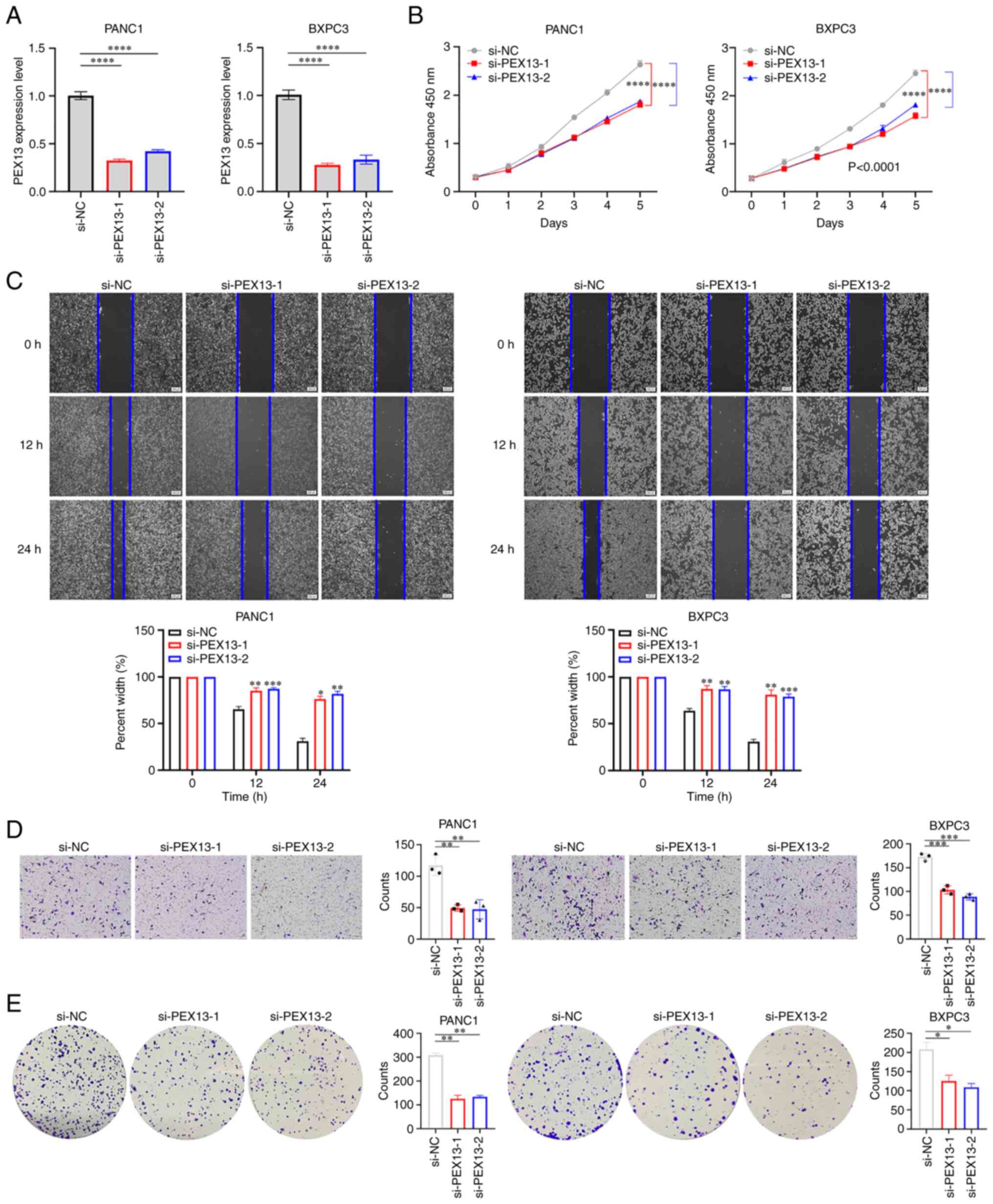|
1
|
Fujiki Y, Okumoto K, Mukai S, Honsho M and
Tamura S: Peroxisome biogenesis in mammalian cells. Front Physiol.
5:3072014. View Article : Google Scholar : PubMed/NCBI
|
|
2
|
Lee MY, Sumpter RJ, Zou Z, Sirasanagandla
S, Wei Y, Mishra P, Rosewich H, Crane DI and Levine B: Peroxisomal
protein PEX13 functions in selective autophagy. EMBO Rep. 18:48–60.
2017. View Article : Google Scholar : PubMed/NCBI
|
|
3
|
Zhang J, Kim J, Alexander A, Cai S,
Tripathi DN, Dere R, Tee AR, Tait-Mulder J, Di Nardo A, Han JM, et
al: A tuberous sclerosis complex signalling node at the peroxisome
regulates mTORC1 and autophagy in response to ROS. Nat Cell Biol.
15:1186–1196. 2013. View Article : Google Scholar : PubMed/NCBI
|
|
4
|
Dixit E, Boulant S, Zhang Y, Lee AS,
Odendall C, Shum B, Hacohen N, Chen ZJ, Whelan SP, Fransen M, et
al: Peroxisomes are signaling platforms for antiviral innate
immunity. Cell. 141:668–681. 2010. View Article : Google Scholar : PubMed/NCBI
|
|
5
|
Sugiura A, Mattie S, Prudent J and Mcbride
HM: Newly born peroxisomes are a hybrid of mitochondrial and
ER-derived pre-peroxisomes. Nature. 542:251–254. 2017. View Article : Google Scholar : PubMed/NCBI
|
|
6
|
Smith JJ and Aitchison JD: Peroxisomes
take shape. Nat Rev Mol Cell Biol. 14:803–817. 2013. View Article : Google Scholar : PubMed/NCBI
|
|
7
|
Jain IH, Calvo SE, Markhard AL, Skinner
OS, To TL, Ast T and Mootha VK: Genetic screen for cell fitness in
high or low oxygen highlights mitochondrial and lipid metabolism.
Cell. 181:716–727. 2020. View Article : Google Scholar : PubMed/NCBI
|
|
8
|
Liu Q, Luo Q, Halim A and Song G:
Targeting lipid metabolism of cancer cells: A promising therapeutic
strategy for cancer. Cancer Lett. 401:39–45. 2017. View Article : Google Scholar : PubMed/NCBI
|
|
9
|
Di Cara F, Savary S, Kovacs WJ, Kim P and
Rachubinski RA: The peroxisome: An up-and-coming organelle in
immunometabolism. Trends Cell Biol. 33:70–86. 2023. View Article : Google Scholar : PubMed/NCBI
|
|
10
|
Diskin C, Zotta A, Corcoran SE, Tyrrell
VJ, Zaslona Z, O'Donnell VB and O'Neill L: 4-Octyl-Itaconate and
Dimethyl Fumarate inhibit COX2 expression and prostaglandin
production in macrophages. J Immunol. 207:2561–2569. 2021.
View Article : Google Scholar : PubMed/NCBI
|
|
11
|
Wanders RJ and Waterham HR: Biochemistry
of mammalian peroxisomes revisited. Annu Rev Biochem. 75:295–332.
2006. View Article : Google Scholar : PubMed/NCBI
|
|
12
|
Ding L, Sun W, Balaz M, He A, Klug M,
Wieland S, Caiazzo R, Raverdy V, Pattou F, Lefebvre P, et al:
Peroxisomal beta-oxidation acts as a sensor for intracellular fatty
acids and regulates lipolysis. Nat Metab. 3:1648–1661. 2021.
View Article : Google Scholar : PubMed/NCBI
|
|
13
|
Lee JY, Plakidas A, Lee WH, Heikkinen A,
Chanmugam P, Bray G and Hwang DH: Differential modulation of
Toll-like receptors by fatty acids: Preferential inhibition by n-3
polyunsaturated fatty acids. J Lipid Res. 44:479–486. 2003.
View Article : Google Scholar : PubMed/NCBI
|
|
14
|
Moreno-Fernandez ME, Giles DA, Stankiewicz
TE, Sheridan R, Karns R, Cappelletti M, Lampe K, Mukherjee R, Sina
C, Sallese A, et al: Peroxisomal beta-oxidation regulates whole
body metabolism, inflammatory vigor, and pathogenesis of
nonalcoholic fatty liver disease. JCI Insight. 3:e936262018.
View Article : Google Scholar : PubMed/NCBI
|
|
15
|
Demers ND, Riccio V, Jo DS, Bhandari S,
Law KB, Liao W, Kim C, Mcquibban GA, Choe SK, Cho DH, et al: PEX13
prevents pexophagy by regulating ubiquitinated PEX5 and peroxisomal
ROS. Autophagy. 19:1781–1802. 2023. View Article : Google Scholar : PubMed/NCBI
|
|
16
|
Chen XF, Tian MX, Sun RQ, Zhang ML, Zhou
LS, Jin L, Chen LL, Zhou WJ, Duan KL, Chen YJ, et al: SIRT5
inhibits peroxisomal ACOX1 to prevent oxidative damage and is
downregulated in liver cancer. Embo Rep. 19:e451242018. View Article : Google Scholar : PubMed/NCBI
|
|
17
|
Ahn YH, Yang Y, Gibbons DL, Creighton CJ,
Yang F, Wistuba II, Lin W, Thilaganathan N, Alvarez CA, Roybal J,
et al: Map2k4 functions as a tumor suppressor in lung
adenocarcinoma and inhibits tumor cell invasion by decreasing
peroxisome proliferator-activated receptor gamma2 expression. Mol
Cell Biol. 31:4270–4285. 2011. View Article : Google Scholar : PubMed/NCBI
|
|
18
|
Wei C, Wang B, Peng D, Zhang X, Li Z, Luo
L, He Y, Liang H, Du X, Li S, et al: Pan-cancer analysis shows that
ALKBH5 is a potential prognostic and immunotherapeutic biomarker
for multiple cancer types including gliomas. Front Immunol.
13:8495922022. View Article : Google Scholar : PubMed/NCBI
|
|
19
|
Tang Z, Kang B, Li C, Chen T and Zhang Z:
GEPIA2: An enhanced web server for large-scale expression profiling
and interactive analysis. Nucleic Acids Res. 47:W556–W560. 2019.
View Article : Google Scholar : PubMed/NCBI
|
|
20
|
Navani S: Manual evaluation of tissue
microarrays in a high-throughput research project: The contribution
of Indian surgical pathology to the Human Protein Atlas (HPA)
project. Proteomics. 16:1266–1270. 2016. View Article : Google Scholar : PubMed/NCBI
|
|
21
|
Wu P, Heins ZJ, Muller JT, Katsnelson L,
de Bruijn I, Abeshouse AA, Schultz N, Fenyo D and Gao J:
Integration and analysis of CPTAC proteomics data in the context of
cancer genomics in the cBioPortal. Mol Cell Proteomics.
18:1893–1898. 2019. View Article : Google Scholar : PubMed/NCBI
|
|
22
|
Liefeld T, Reich M, Gould J, Zhang P,
Tamayo P and Mesirov JP: GeneCruiser: A web service for the
annotation of microarray data. Bioinformatics. 21:3681–3682. 2005.
View Article : Google Scholar : PubMed/NCBI
|
|
23
|
Mayakonda A, Lin DC, Assenov Y, Plass C
and Koeffler HP: Maftools: Efficient and comprehensive analysis of
somatic variants in cancer. Genome Res. 28:1747–1756. 2018.
View Article : Google Scholar : PubMed/NCBI
|
|
24
|
Li T, Fu J, Zeng Z, Cohen D, Li J, Chen Q,
Li B and Liu XS: TIMER2.0 for analysis of tumor-infiltrating immune
cells. Nucleic Acids Res. 48:W509–W514. 2020. View Article : Google Scholar : PubMed/NCBI
|
|
25
|
Vasaikar SV, Straub P, Wang J and Zhang B:
LinkedOmics: Analyzing multi-omics data within and across 32 cancer
types. Nucleic Acids Res. 46:D956–D963. 2018. View Article : Google Scholar : PubMed/NCBI
|
|
26
|
Langfelder P and Horvath S: WGCNA: An R
package for weighted correlation network analysis. BMC
Bioinformatics. 9:5592008. View Article : Google Scholar : PubMed/NCBI
|
|
27
|
Yan Y, Zhang D, Zhou P, Li B and Huang SY:
HDOCK: A web server for protein-protein and protein-DNA/RNA docking
based on a hybrid strategy. Nucleic Acids Res. 45:W365–W373. 2017.
View Article : Google Scholar : PubMed/NCBI
|
|
28
|
Wei C, Zhang X, Peng D, Zhang X, Guo H, Lu
Y, Luo L, Wang B, Li Z, He Y, et al: LncRNA HOXA11-AS promotes
glioma malignant phenotypes and reduces its sensitivity to ROS via
Tpl2-MEK1/2-ERK1/2 pathway. Cell Death Dis. 13:9422022. View Article : Google Scholar : PubMed/NCBI
|
|
29
|
Martincorena I, Raine KM, Gerstung M,
Dawson KJ, Haase K, Van Loo P, Davies H, Stratton MR and Campbell
PJ: Universal patterns of selection in cancer and somatic tissues.
Cell. 171:1029–1041. 2017. View Article : Google Scholar : PubMed/NCBI
|
|
30
|
Luo Y, Zheng S, Wu Q, Wu J, Zhou R, Wang
C, Wu Z, Rong X, Huang N, Sun L, et al: Long noncoding RNA (lncRNA)
EIF3J-DT induces chemoresistance of gastric cancer via autophagy
activation. Autophagy. 17:4083–4101. 2021. View Article : Google Scholar : PubMed/NCBI
|
|
31
|
Wei Y, Lu C, Zhou P, Zhao L, Lyu X, Yin J,
Shi Z and You Y: EIF4A3-induced circular RNA ASAP1 promotes
tumorigenesis and temozolomide resistance of glioblastoma via
NRAS/MEK1/ERK1-2 signaling. Neuro Oncol. 23:611–624. 2021.
View Article : Google Scholar : PubMed/NCBI
|
|
32
|
Baxevanis CN, Fortis SP and Perez SA: The
balance between breast cancer and the immune system: Challenges for
prognosis and clinical benefit from immunotherapies. Semin Cancer
Biol. 72:76–89. 2021. View Article : Google Scholar : PubMed/NCBI
|
|
33
|
Chen Y, Jia K, Sun Y, Zhang C, Li Y, Zhang
L, Chen Z, Zhang J, Hu Y, Yuan J, et al: Predicting response to
immunotherapy in gastric cancer via multi-dimensional analyses of
the tumour immune microenvironment. Nat Commun. 13:48512022.
View Article : Google Scholar : PubMed/NCBI
|
|
34
|
Baretti M and Le DT: DNA mismatch repair
in cancer. Pharmacol Ther. 189:45–62. 2018. View Article : Google Scholar : PubMed/NCBI
|
|
35
|
Lin A, Zhang J and Luo P: Crosstalk
between the MSI status and tumor microenvironment in colorectal
cancer. Front Immunol. 11:20392020. View Article : Google Scholar : PubMed/NCBI
|
|
36
|
Luchini C, Bibeau F, Ligtenberg M, Singh
N, Nottegar A, Bosse T, Miller R, Riaz N, Douillard JY, Andre F, et
al: ESMO recommendations on microsatellite instability testing for
immunotherapy in cancer, and its relationship with PD-1/PD-L1
expression and tumour mutational burden: A systematic review-based
approach. Ann Oncol. 30:1232–1243. 2019. View Article : Google Scholar : PubMed/NCBI
|
|
37
|
Wu W, Wang X, Le W, Lu C, Li H, Zhu Y,
Chen X, An W, Xu C, Wu Q, et al: Immune microenvironment
infiltration landscape and immune-related subtypes in prostate
cancer. Front Immunol. 13:10012972022. View Article : Google Scholar : PubMed/NCBI
|
|
38
|
Deberardinis RJ and Chandel NS:
Fundamentals of cancer metabolism. Sci Adv. 2:e16002002016.
View Article : Google Scholar : PubMed/NCBI
|
|
39
|
Porporato PE, Filigheddu N, Pedro J,
Kroemer G and Galluzzi L: Mitochondrial metabolism and cancer. Cell
Res. 28:265–280. 2018. View Article : Google Scholar : PubMed/NCBI
|
|
40
|
Wanders RJ and Waterham HR: Biochemistry
of mammalian peroxisomes revisited. Annu Rev Biochem. 75:295–332.
2006. View Article : Google Scholar : PubMed/NCBI
|
|
41
|
Beloribi-Djefaflia S, Vasseur S and
Guillaumond F: Lipid metabolic reprogramming in cancer cells.
Oncogenesis. 5:e1892016. View Article : Google Scholar : PubMed/NCBI
|
|
42
|
Dean JM and Lodhi IJ: Structural and
functional roles of ether lipids. Protein Cell. 9:196–206. 2018.
View Article : Google Scholar : PubMed/NCBI
|















